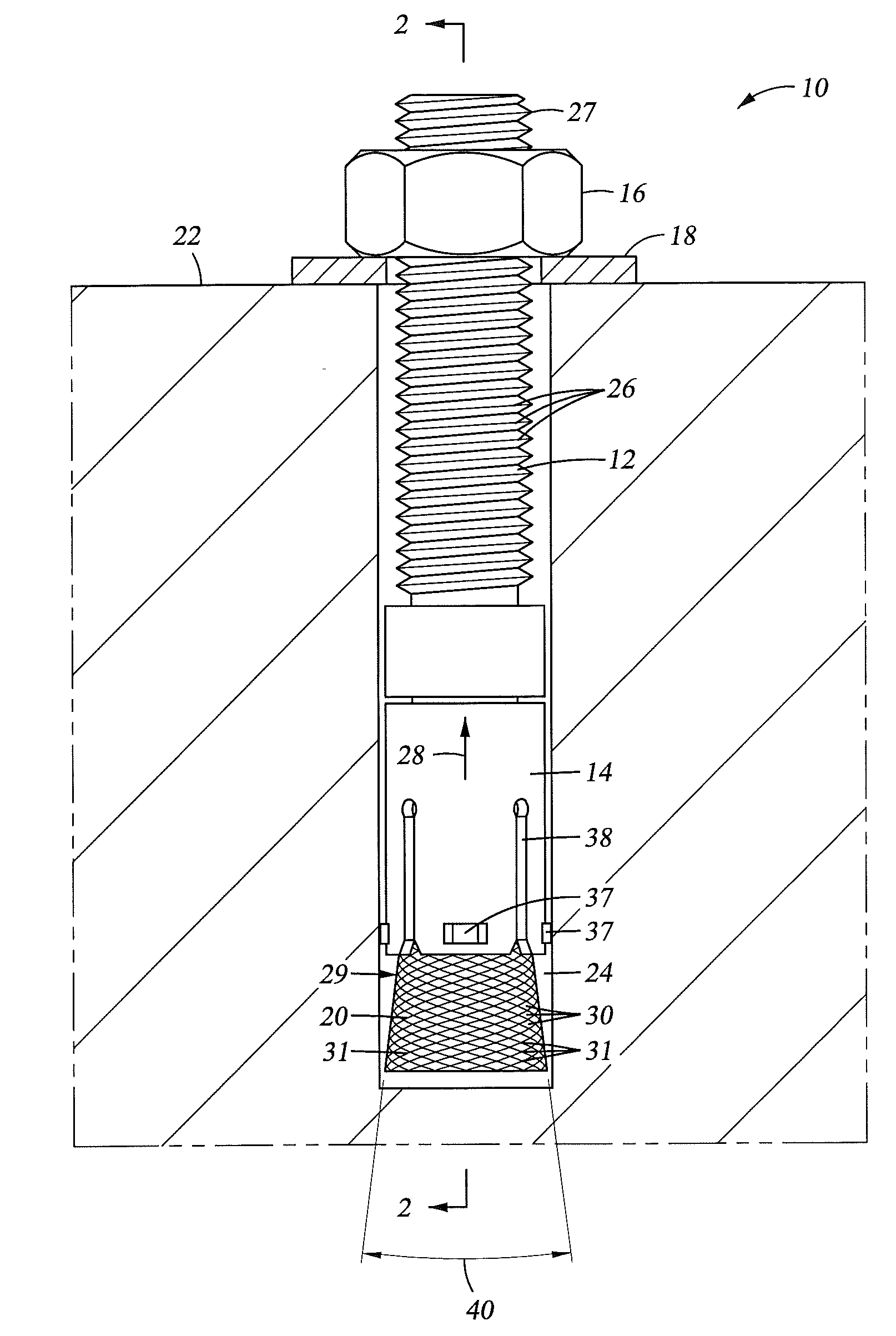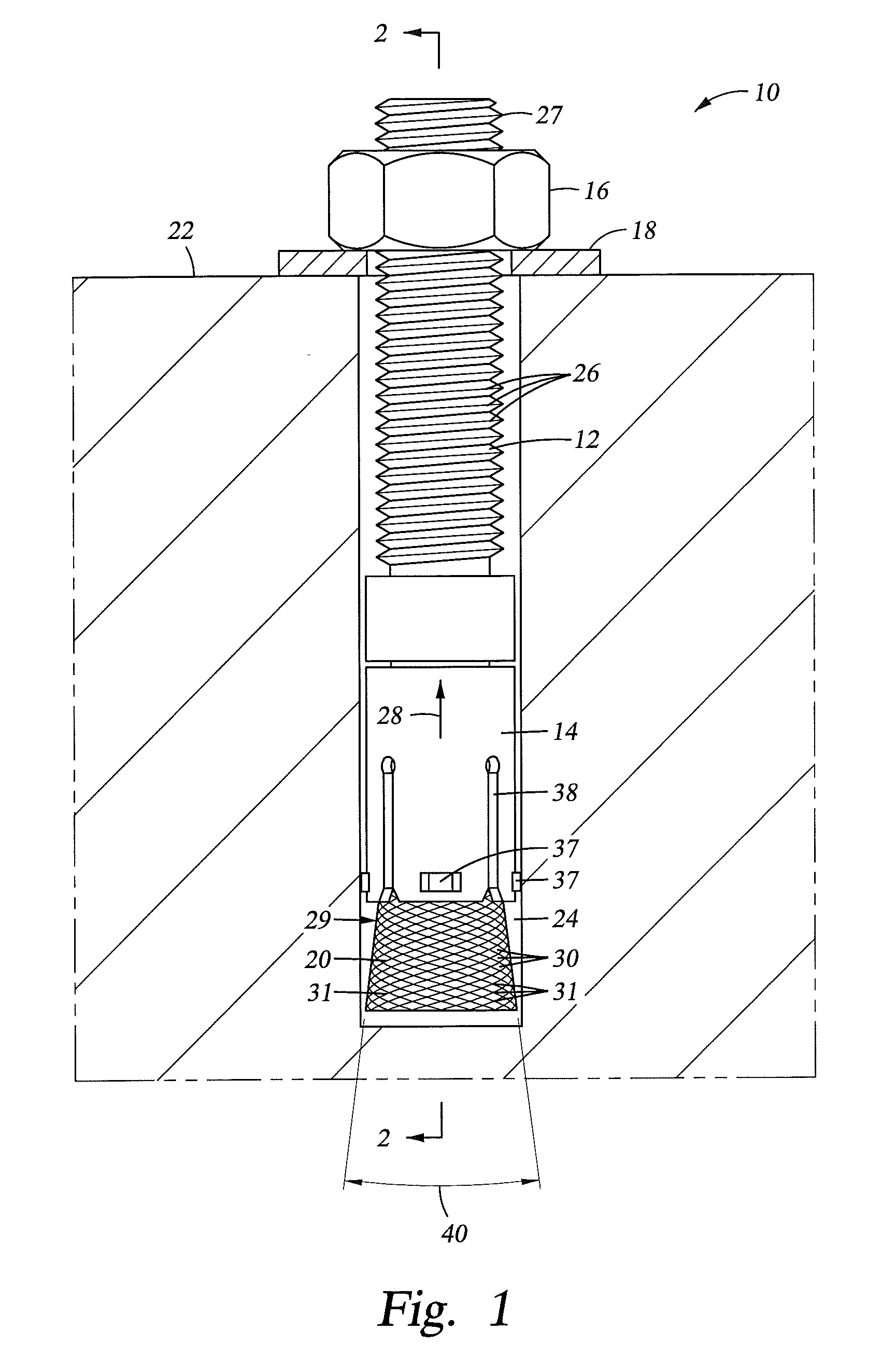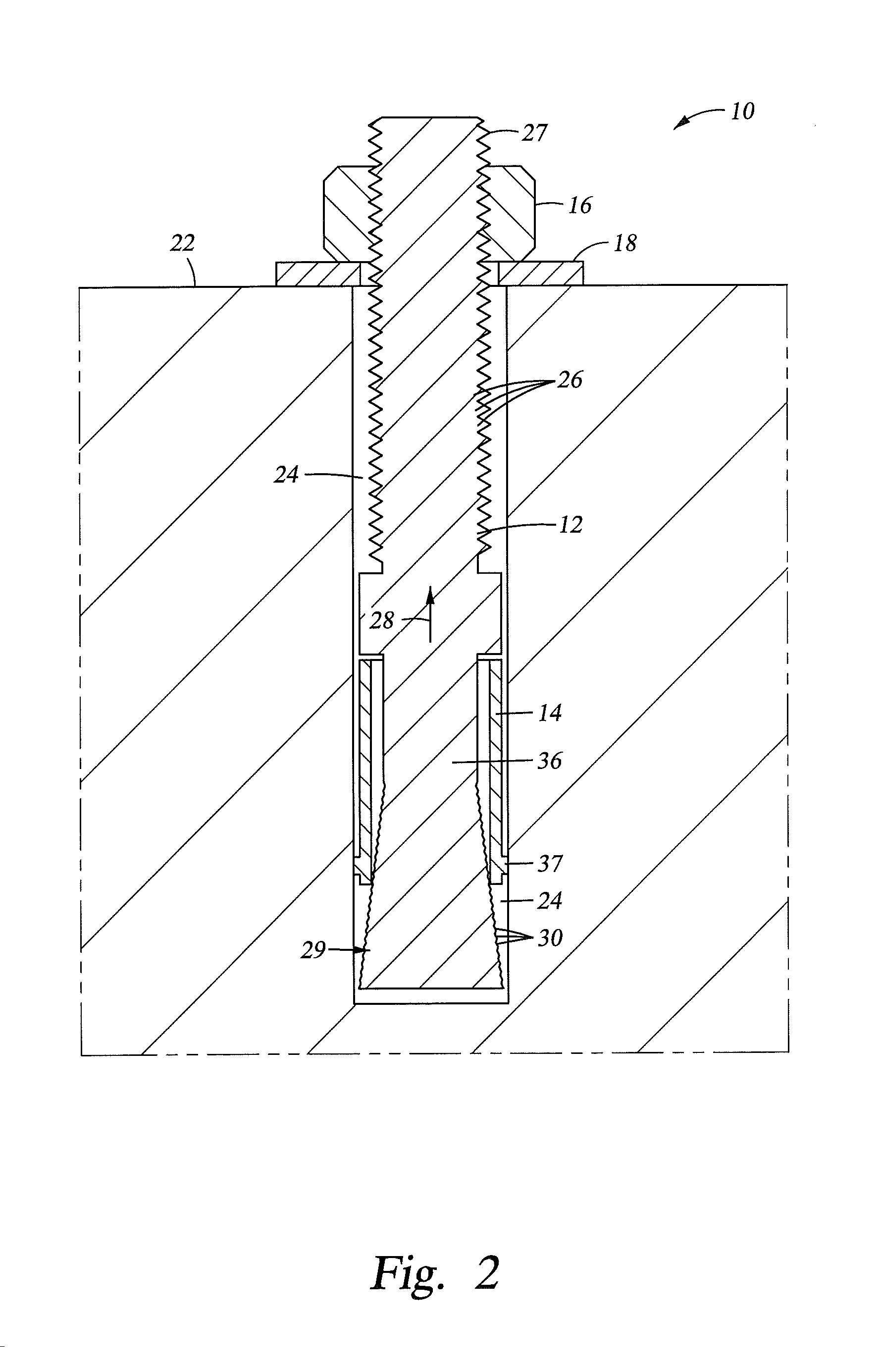Antigalling anchor bolt and method
a technology of anti-galling and anchor bolt, which is applied in the direction of fastening means, screws, dowels, etc., can solve the problems of localized material transfer between the surfaces, affecting the protection affecting the stability of the anchor bolt, so as to reduce the contact area, reduce the breaking force, and reduce the effect of galling
- Summary
- Abstract
- Description
- Claims
- Application Information
AI Technical Summary
Benefits of technology
Problems solved by technology
Method used
Image
Examples
Embodiment Construction
[0012]Referring to FIGS. 1-5, an embodiment of an anchor bolt 10 disclosed herein is shown. The anchor bolt 10 includes, a stud 12, a sleeve 14, a nut 16 and an optional washer 18. The stud has a wedge 20 that is configured to radially expand the sleeve 14 during setting of the anchor bolt 10 into a base material 22. To set the anchor bolt 10, the anchor bolt 10 is first inserted into a hole 24 made in the base material 22, the hole 24 having a diameter only slightly larger than that of the wedge 20. The nut 16 engages threads 26 on a portion 27 of the stud 12 that protrudes from the base material 22. Turning the nut 16 pulls the stud 12 and the wedge 20 in a setting direction as shown by arrow 28 while the sleeve 14 remains stationary in the base material 22 due to friction therebetween. As the wedge 20 moves in the direction of arrow 28, the sleeve 14 is expanded radially outwardly. Since the diameter of the hole 24 does not change appreciably due to the expansion input, the ancho...
PUM
 Login to View More
Login to View More Abstract
Description
Claims
Application Information
 Login to View More
Login to View More - R&D
- Intellectual Property
- Life Sciences
- Materials
- Tech Scout
- Unparalleled Data Quality
- Higher Quality Content
- 60% Fewer Hallucinations
Browse by: Latest US Patents, China's latest patents, Technical Efficacy Thesaurus, Application Domain, Technology Topic, Popular Technical Reports.
© 2025 PatSnap. All rights reserved.Legal|Privacy policy|Modern Slavery Act Transparency Statement|Sitemap|About US| Contact US: help@patsnap.com



